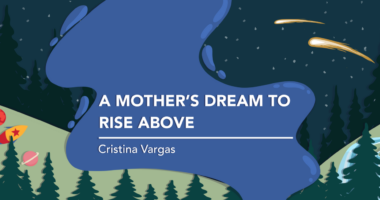Good News for CLN1 Disease and a Sprint to the Finish

Last week, Taysha Gene Therapies announced the company has entered into license and inventory purchase agreements with Abeona Therapeutics for ABO-202, an adeno-associated virus (AAV) gene therapy for CLN1 disease (Batten disease).
In the longest race, this news is a huge leap forward for children like my sister, Taylor, who lost her life to CLN1 disease in 2018. For me, it’s also extremely personal, even though it came far too late to save Taylor. That’s because Taylor’s Tale set ABO-202 in motion more than seven years ago, when we led a coalition of grassroots charities to fund a new research project under Steven Gray, PhD, then at the University of North Carolina at Chapel Hill.
At the time, Taylor’s Tale had already invested hundreds of thousands of dollars in enzyme replacement therapy and, to a lesser extent, small-molecule drug therapy, since our founding in 2007. But while those approaches showed some promise, gene therapy was special because of its potential to fix Batten disease at its genetic root, erasing the need for more surgeries or lifelong medication.
In my book, “Run to the Light,” I described the emotions that coursed through my body the morning we announced our support for Dr. Gray:
“The pressure was high. I sensed that we were on the cusp of something great, and I wanted my speech to capture that. Even as Taylor continued to slip, I had a feeling deep in my gut that 2013 would be the year we sprinted forward. This was where two roads diverged. We were racing ahead, and Batten disease was holding my sister back.”
Today, I remember that special day and the years that followed, and I think about how, even while my sister was still alive yet so clearly past saving, I managed to dig deep. Even as Taylor’s condition continued to deteriorate, I found a way to keep crawling forward.
And after running Charlotte’s Thunder Road Half Marathon blindfolded in the fall of 2013, my energy for the fight against Batten disease soared. In the years that followed, I wrote a book, delivered a TED talk, and ran a race in almost half of the 50 U.S. states. Meanwhile, I cheered for our friends Steve Gray and Ale Rozenberg, the postdoc working with Steve on the CLN1 disease gene therapy. When our CLN1 mice celebrated their first birthday (most die at eight months), Mom and I drove to Chapel Hill and walked into the lab with pizza and beer and cake and some stinky cheese, and we threw those mice a birthday party.
Our hearts soared even higher when in 2016, Abeona signed on to move the work to the clinical stage. For several more years, the future seemed promising. And when the company received clearance from the U.S. Food and Drug Administration of its investigational new drug (IND) application for the CLN1 disease project, we could almost see the finish line. An IND, after all, gives trial sponsors the green light to begin treating patients.
But then, for well over a year, nothing happened. Rest assured, Taylor’s Tale didn’t rest behind the scenes. Mom and I, in particular, did all we could as founders of a small public charity with small pockets and big hearts to make sure Taylor’s legacy didn’t die on the shelf. At times, I thought about something Steve said to me all the way back in 2013, when we announced the project at UNC. “We’ll have to be relentless, you know. Nothing worth having is ever easy.”
He was right, of course. But in the first eight months of 2020, I hit my lowest point in a long, long time. I remember now how even when Taylor died, so many things were going well. The promise of a treatment (a treatment she inspired). My mom’s ability to move mountains as a rare disease advocate. My debut as an author. The birth of my son.
But this year, I often struggled to find the will to keep running. In my book, I talked about how some nights, I wondered why I was up late at night battling IT issues with the Taylor’s Tale website when I should have been spending time with my sister while she was still alive. Now, I wondered why I was battling a rare disease and a pandemic and a stroke of bad luck when I should have been spending time with my son.
That’s why I cried happy tears when I learned Taysha Gene Therapies would shepherd Steve’s CLN1 disease work for the home stretch.
Like running, the fight against an ultra-rare disease is mostly a mind game. It’s why miles 10 and 11 are frequently more difficult than the last mile of a 13.1-mile race. It’s easier to dig deep when you can see the finish line. It’s easier to believe. And while I may have come close to taking myself out of the race this year, I never stopped believing.
To sprinting forward.
To reaching finish lines.
To Taylor.
***
Note: Batten Disease News is strictly a news and information website about the disease. It does not provide medical advice, diagnosis, or treatment. This content is not intended to be a substitute for professional medical advice, diagnosis, or treatment. Always seek the advice of your physician or other qualified health provider with any questions you may have regarding a medical condition. Never disregard professional medical advice or delay in seeking it because of something you have read on this website. The opinions expressed in this column are not those of Batten Disease News or its parent company, Bionews, and are intended to spark discussion about issues pertaining to Batten disease.






Leave a comment
Fill in the required fields to post. Your email address will not be published.